Best Ecommerce Platforms In 2024: How To Choose One For Your Store?
Looking for the best ecommerce platforms for your dropshipping business?
To become a dropshipping entrepreneur, it is just not enough to build a simple website and market your business.
You need to have an online store to start dropshipping. But how can you build such a store?
In fact, you need a specific kind of software, i.e., an ecommerce platform, which enables the complete process of selling online.
Table of Contents
The Best Ecommerce Platforms for 2024
Now that you know what to look for when choosing the right ecommerce platform in 2024, let’s look at each one in detail.
1. Shopify
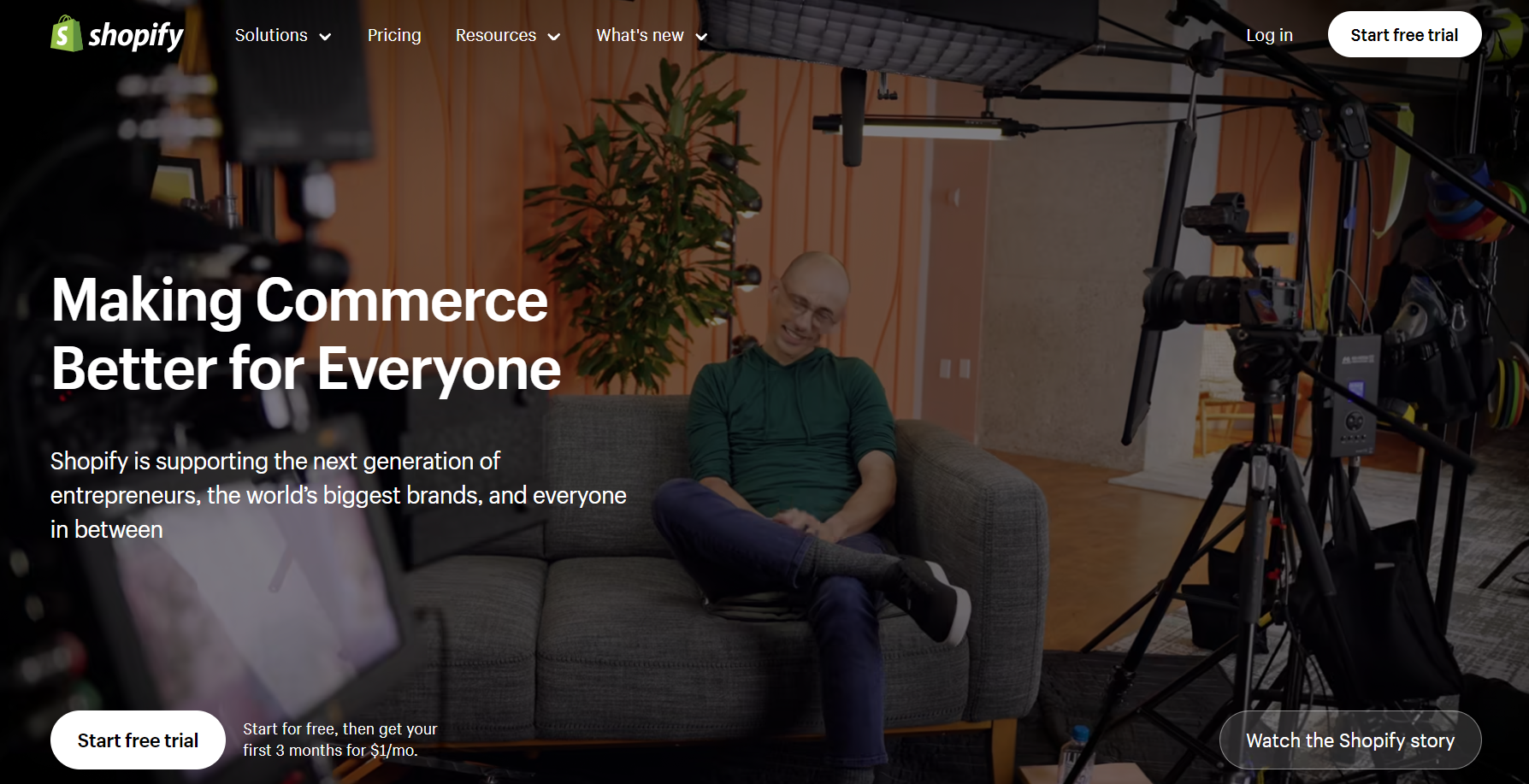
Shopify has become one of the best ecommerce platforms and perhaps the most popular one up to now.
But, explore – Is Shopify Legit In 2024?
Moreover, it is easy to set up and navigate, making it a good choice for both beginners and growing businesses. The platform boasts a potent combination of an easy-to-use interface, intuitive navigation, and great customization options.
In addition, it lets you sell products from your e-commerce site and social media platforms such as Instagram and Facebook. But that’s not all this platform has to offer.
It also allows you to sell products on online marketplaces such as eBay and Amazon, as well as in person with its point-of-sale (POS) software.
Shopify also comes with many other features:
- More than 100 payment gateways;
- More than 3,000 apps in the Shopify app store;
- A built-in mobile commerce shopping cart;
- Excellent customer service through live chat, Twitter, phone, and e-mail;
- When it comes to its pricing plans, the platform offers three monthly plans:
Basic Shopify: US$32
Shopify: US$92;
Advanced Shopify: US$399. - You can also test out the platform with a 14-day free trial.
2. BigCommerce
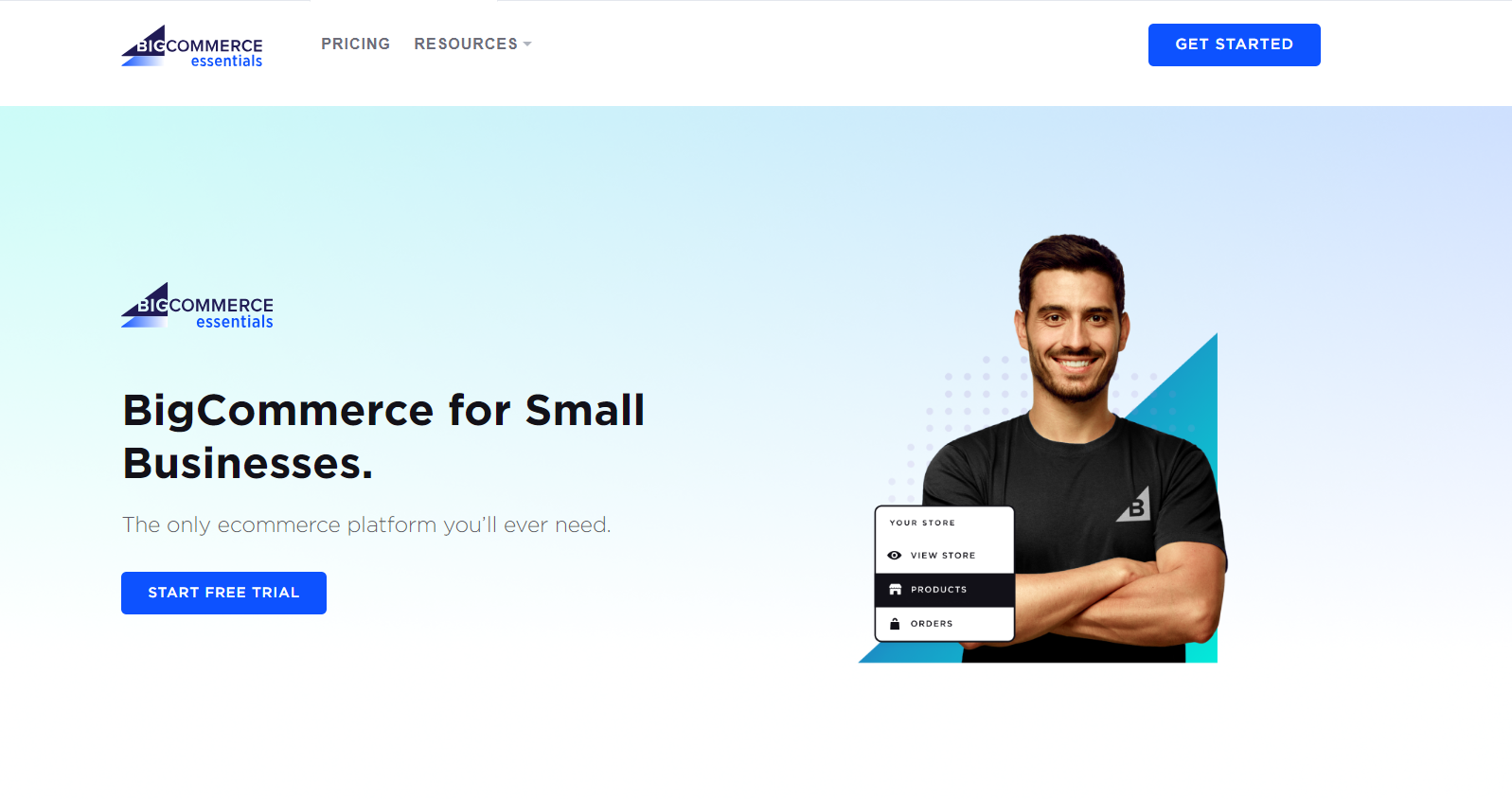
BigCommerce is also one of the most popular dropshipping platforms out there.
In addition, this is another easy-to-use platform. Its interface is incredibly intuitive because it can take you step-by-step through the creation of your dropshipping store. Nevertheless, the platform is not quite as beginner-friendly as Shopify.
But unlike Shopify, BigCommerce has plenty of built-in features that are free to use.
By using the platform, you can also:
- Sell on Amazon, eBay, Instagram, and Facebook;
- Start a blog on your website and incorporate content marketing into your marketing strategy;
- Use more than 65 payment gateways and accept international payments;
- Upload products in bulk;
- Take advantage of the amazing customer service through phone, live chat, and e-mail.
BigCommerce offers four monthly pricing plans to help you find one that fits your budget and business needs:
– Standard: US$29/month
– Plus: US$79/month
– Pro: US$299/month
– Enterprise: Contact them for custom pricing.
And the good news is that you can try the platform free for 15 days and then you can select a pricing plan.
3. Wix
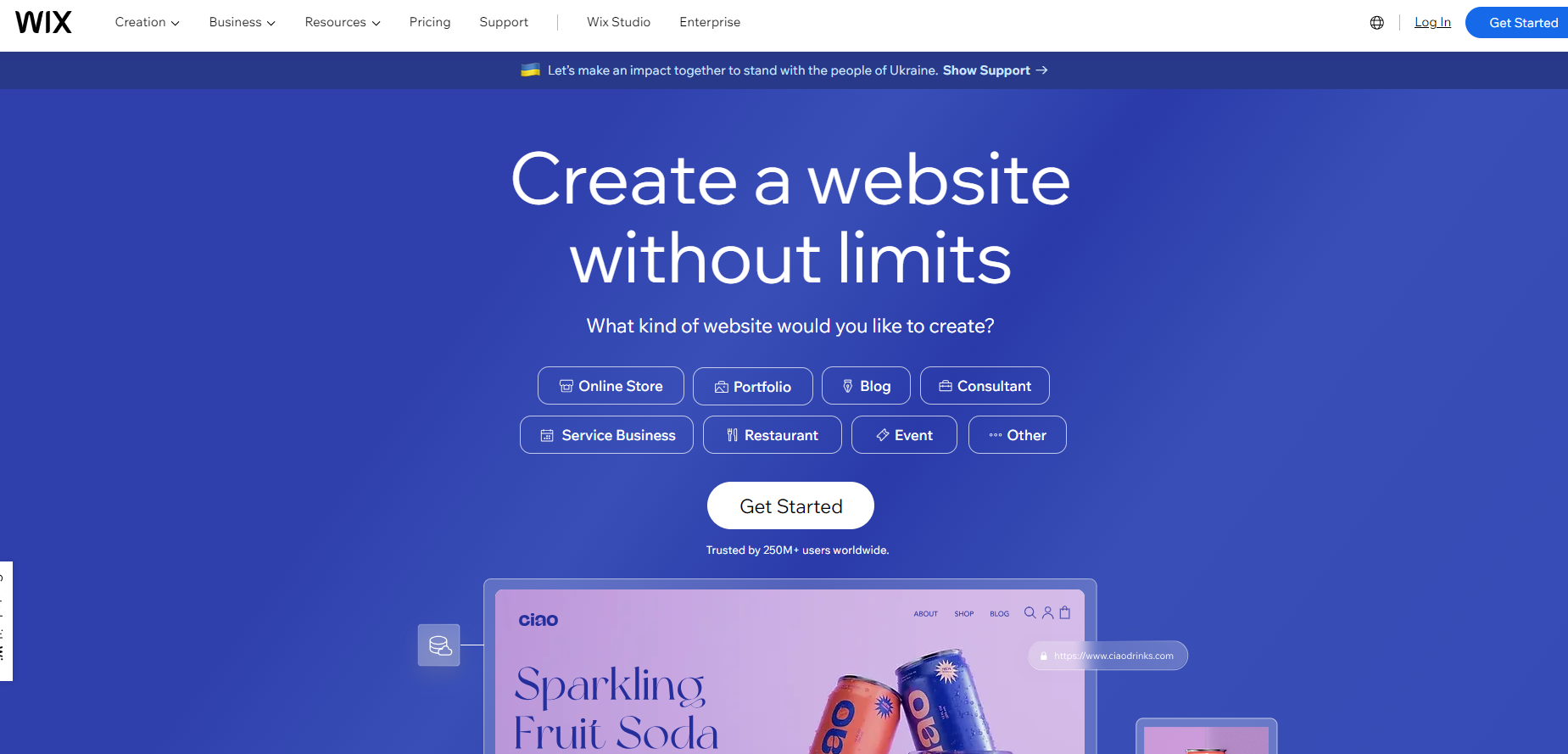
Wix is one of the best e-commerce platforms for small businesses due to its super-simple setup and affordable pricing.
Namely, the platform offers many free and visual-heavy themes and templates to get you started and customize your website. Plus, it features the drag-and-drop editor or the ADI (artificial design intelligence) tool.
This makes the creation and design of a website a simple process. And that’s why this platform is one of the most popular website builders out there.
With Wix, you can also:
- Sell products through multiple channels such as eBay, Facebook, and Instagram;
- Choose from more than 250 app integrations;
- Use abandoned cart recovery tools;
- Optimize your website for mobile devices;
- Enjoy good customer service through help tickets and callback service available 24/7.
As mentioned earlier, this platform offers affordable pricing.
Let’s look at its monthly subscription plans for business and ecommerce:
- Business Basic: US$17/month;
- Business Unlimited: US$25/month
- Business VIP: US$35/month
But there is no free trial on the platform.
4. WooCommerce
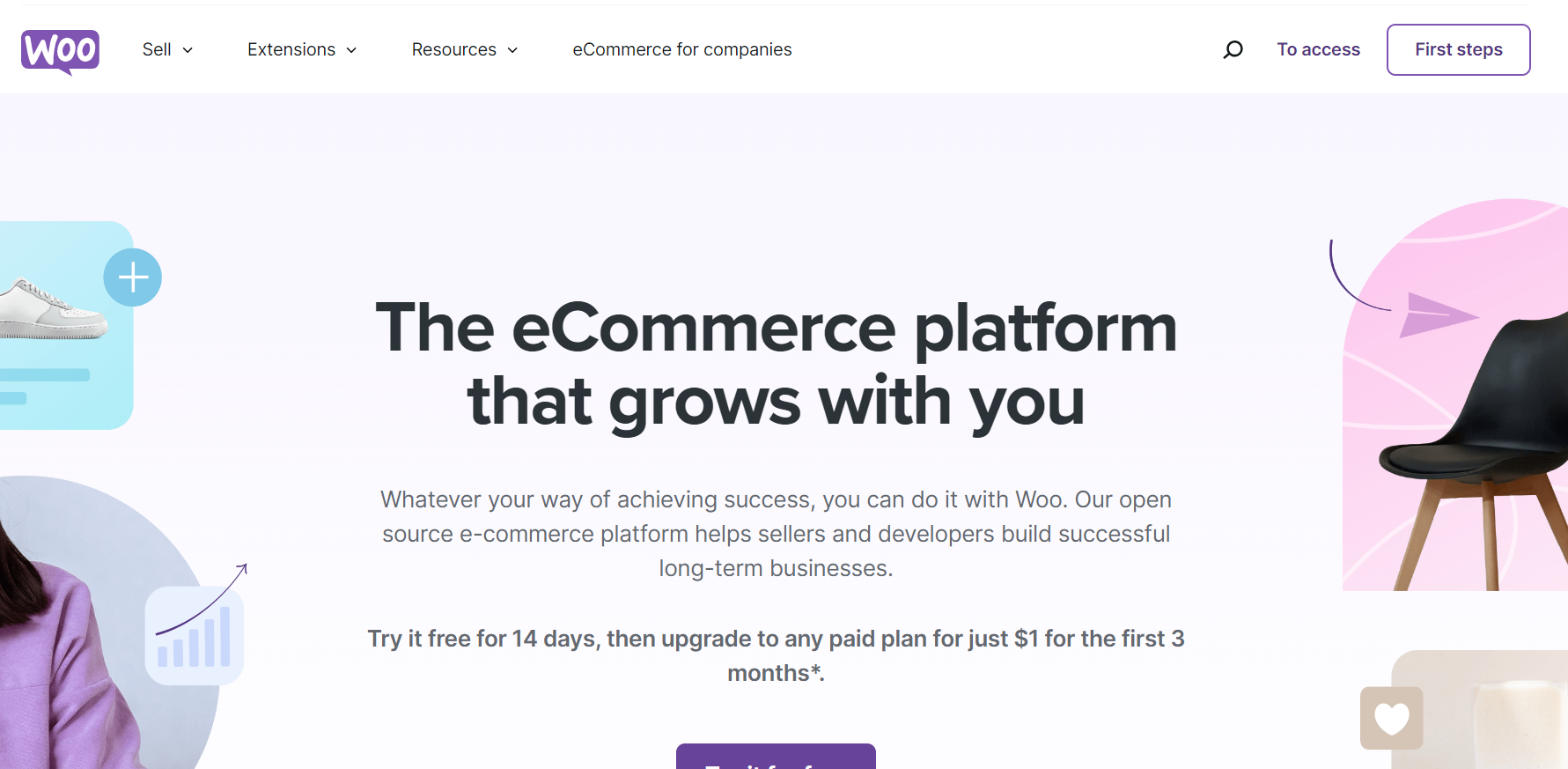
Unlike the ecommerce platforms for dropshipping listed above, this is not an actual -commerce platform.
WooCommerce is actually self-hosted, open-source software. This means that when using the software, you are responsible for your own domain, hosting, and literally everything else.
Furthermore, it is a free plugin for WordPress, enabling you to turn your WordPress website into a fully functioning dropshipping store.
That is to say, WordPress enables you to create your own website, whereas WooCommerce enables you to add real ecommerce functionality to it.
Thanks to WooCommerce extensions, you can add a wide range of payment gateways to your store. But you will have to pay for those extensions.
The same goes for the apps and integrations. You can add tons of apps to your site but they will cost money. However, due to the fact that WooCommerce itself is free, you can invest in apps and extensions to improve the customer experience for online buyers.
And as this is a free, open-source plugin, support comes through a large community of techie people already using the platform or creating plugins for it.
5. Magento
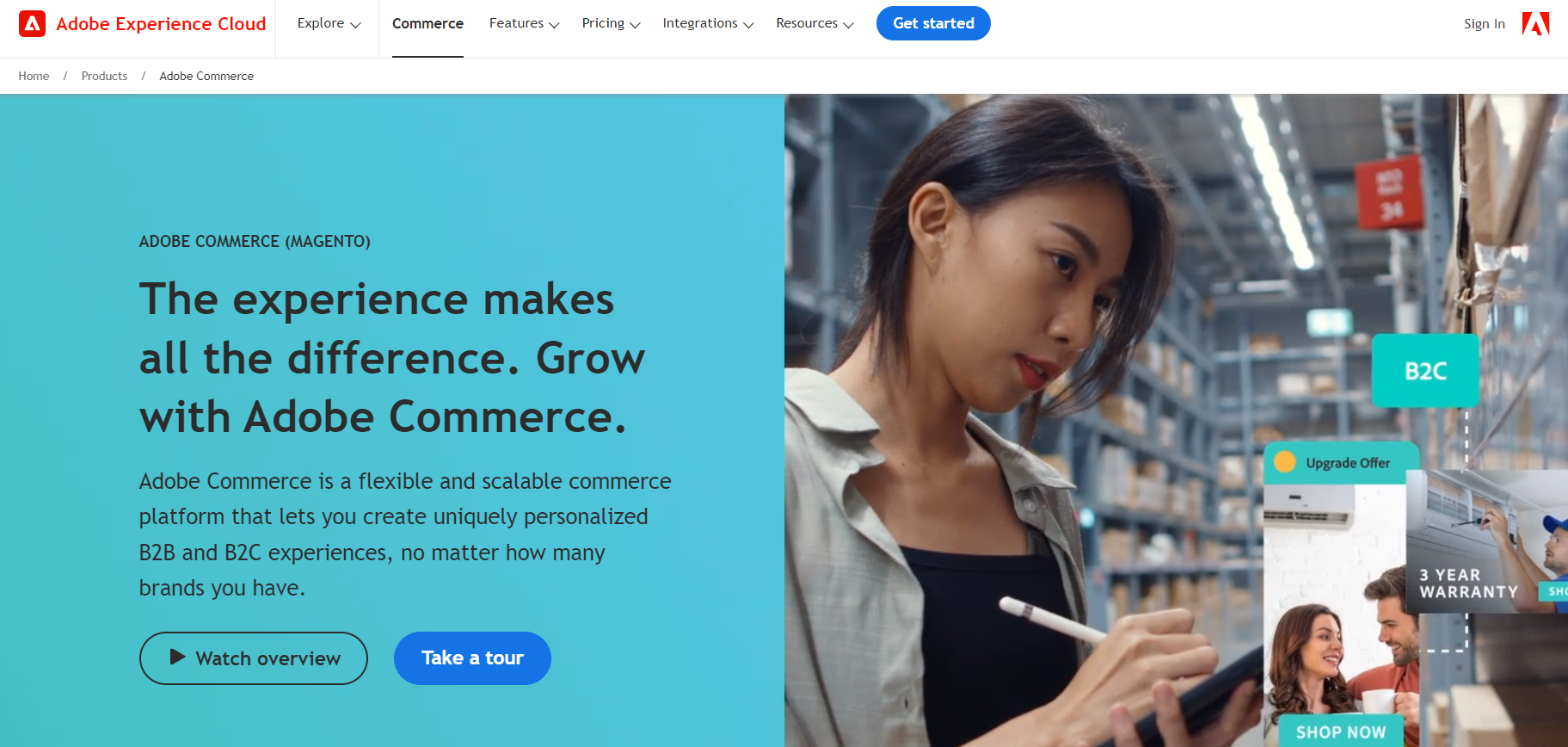
One of the best open-source ecommerce platforms, Magento is typically used by medium- and large-sized online businesses.
What is so special about Magento? This is an Adobe product, offering the most customizable solution for your dropshipping business. To cut a long story short, it offers complete control over your site.
But the only “downside” of Magento is that it is not an easy-to-use platform. This means that you may face some difficulties if you are a non-tech person. However, all those problems can be solved by a Magento eCommerce development company.
However, let’s focus on the benefits of using the platform. Some of the reasons why you should use this ecommerce platform in 2024 include:
- Open-source technology offering flexible, scalable ecommerce solutions;
- More than 1,000 themes and extensions;
- One-click instant purchase options;
- More than 50 payment gateways.
If you want to find out more about its pricing plans, feel free to contact sales. But remember that it is not possible to test out the platform for free.
6. Squarespace

Why is Squarespace found on our list of the best ecommerce platforms? To begin with, Squarespace is primarily a website builder, not one of the dropshipping platforms.
As a result, it requires a good amount of tweaking to add ecommerce functionality. Fortunately, it has a drag-and-drop editor that does not require you to have high-tech skills.
Some of the platform’s most powerful features include:
- A variety of third-party integrations, including ShipStation and Printful; Here you can check our Printful vs Printify review.
- Multiple payment gateways;
- Integrated e-mail marketing features;
- Great customer service through live chat available Monday to Friday and e-mail available 24/7.
Like Wix, this platform offers affordable pricing, as well. And here are its monthly subscription plans:
- Personal – $16/month;
- Business- $23/month;
- Commerce Basic – $27/month;
- Commerce Advanced – $49/mont
You can try it free for 14 days. Plus, you can opt for a one-time 7-day trial extension.
7. PrestaShop
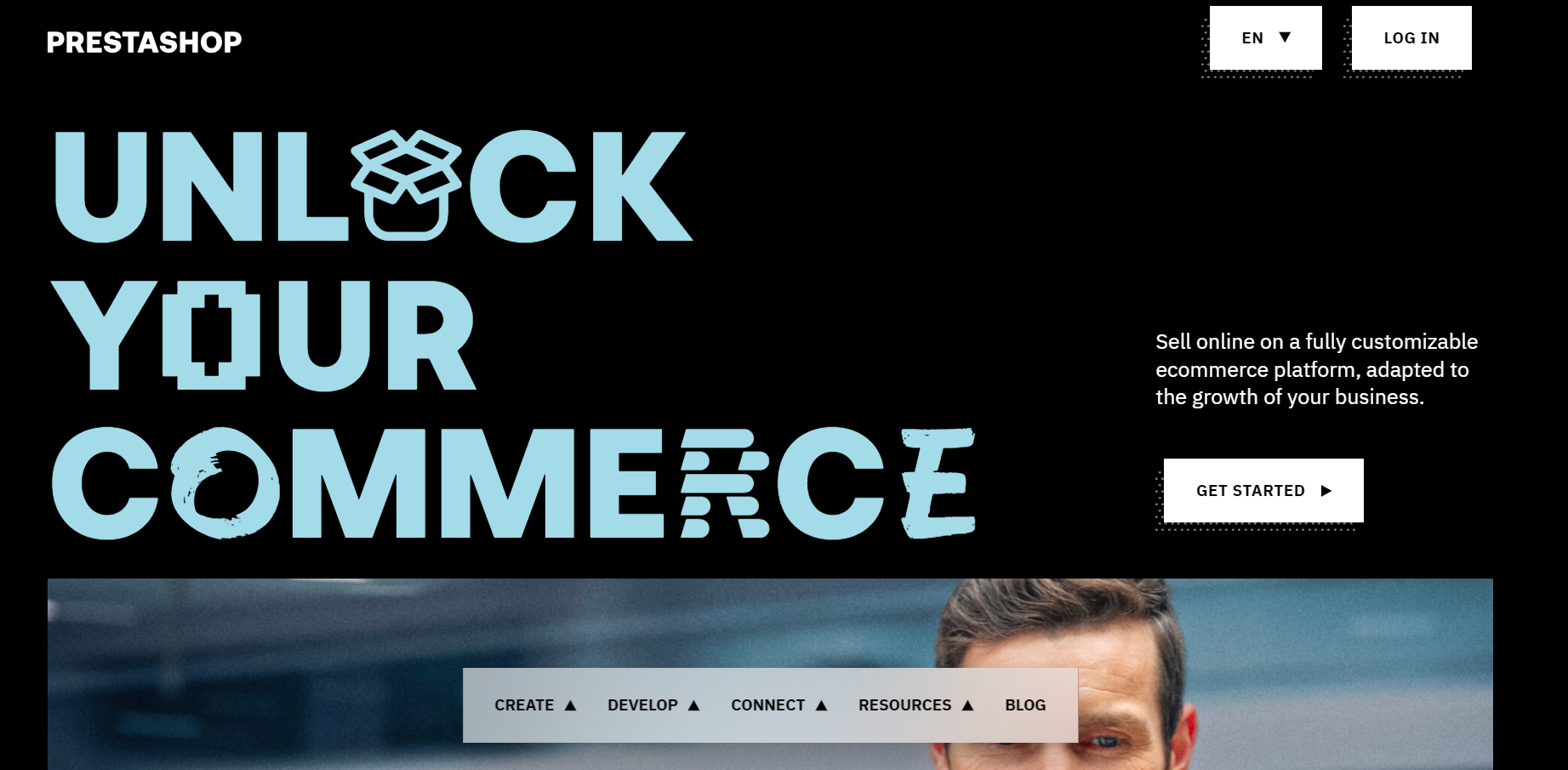
One of the best ecommerce platforms, PrestaShop is a free, open-source solution for your dropshipping business.
Though it provides some basic features free of charge, more advanced features have to be paid for. This means that PrestaShop is free to download and install, but the hosting, themes, and extensions will cost you.
With respect to ease of use, the platform is good for dropshipping entrepreneurs with a somewhat technical background.
There is no built-in customer support but the PrestaShop community may help you a lot when a problem occurs. The community is made up of more than one million members, including experts.
Additionally, some of the many advantages that make PrestaShop a great ecommerce platform to use in 2024 include:
- Available in 75 languages;
- International selling;
- A large and ready-to-help community;
- Strong SEO;
- Reliable analytical data thanks to its tool called PrestaShop Metrics.
8. Shift4Shop
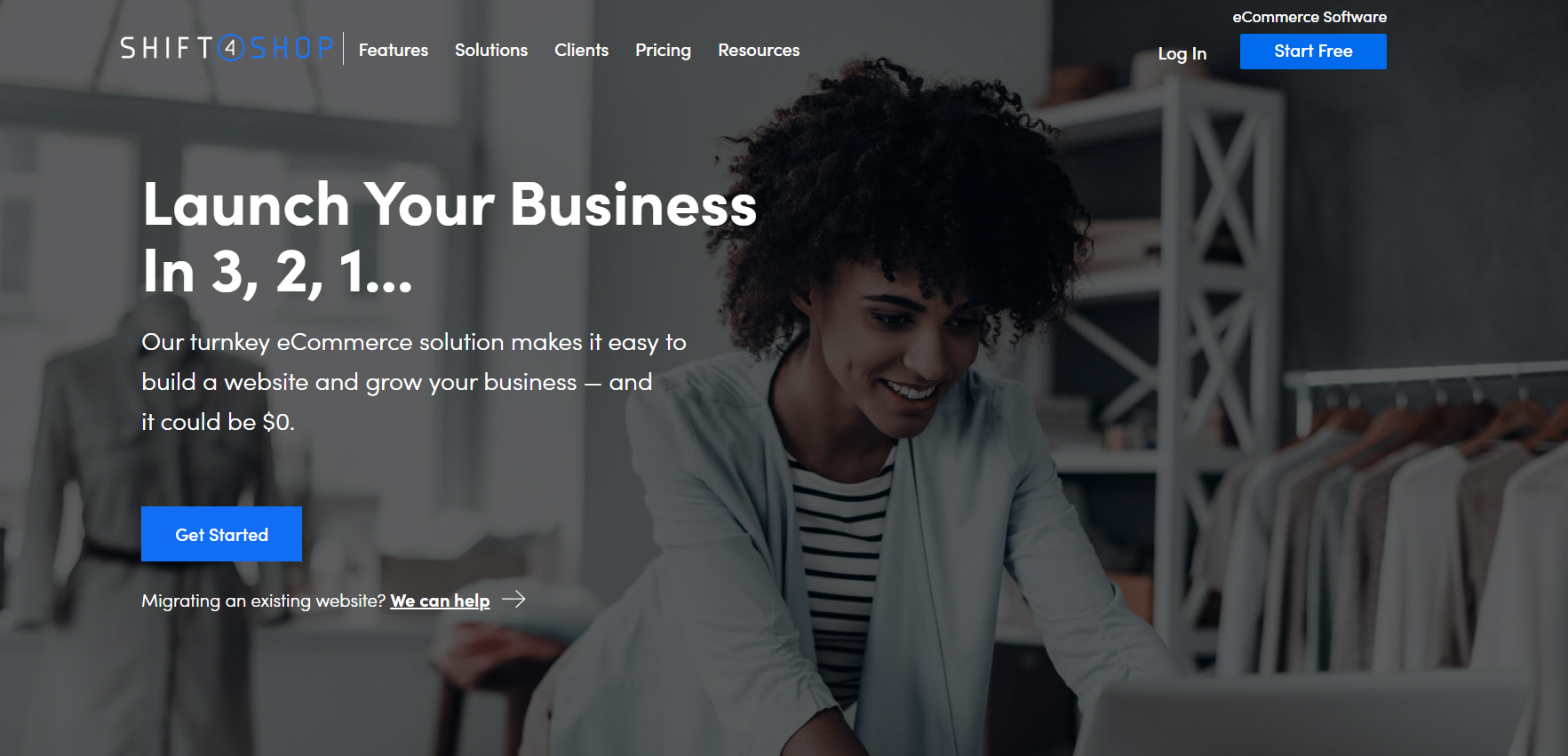
Established in 1997, 3DCart (now Shift4Shop) is the oldest of all drop shipping platforms mentioned here.
But despite being older than Shopify and BigCommerce, this platform is not as popular as they are. However, Shift4Shop does everything it should.
More importantly, it is a feature-rich platform boasting plenty of features including:
- An easy-to-navigate dashboard and eye-catching interface;
- A drag-and-drop HTML editor;
- Built-in SEO and marketing tools;
- More than 350 add-ons and integrations;
- More than 100 payment gateways.
With this platform, you have the chance to choose from the following monthly pricing plans:
– Basic Store: US$29;
– Plus Store: US$79;
– Pro: US$229.
Finally, it is important to note that you can get a 10% discount if you pay for a year in advance. Likewise, you can try Shift4Shop free for 15 days.
Check our full guide: Shift4Shop Review.
9. Volusion
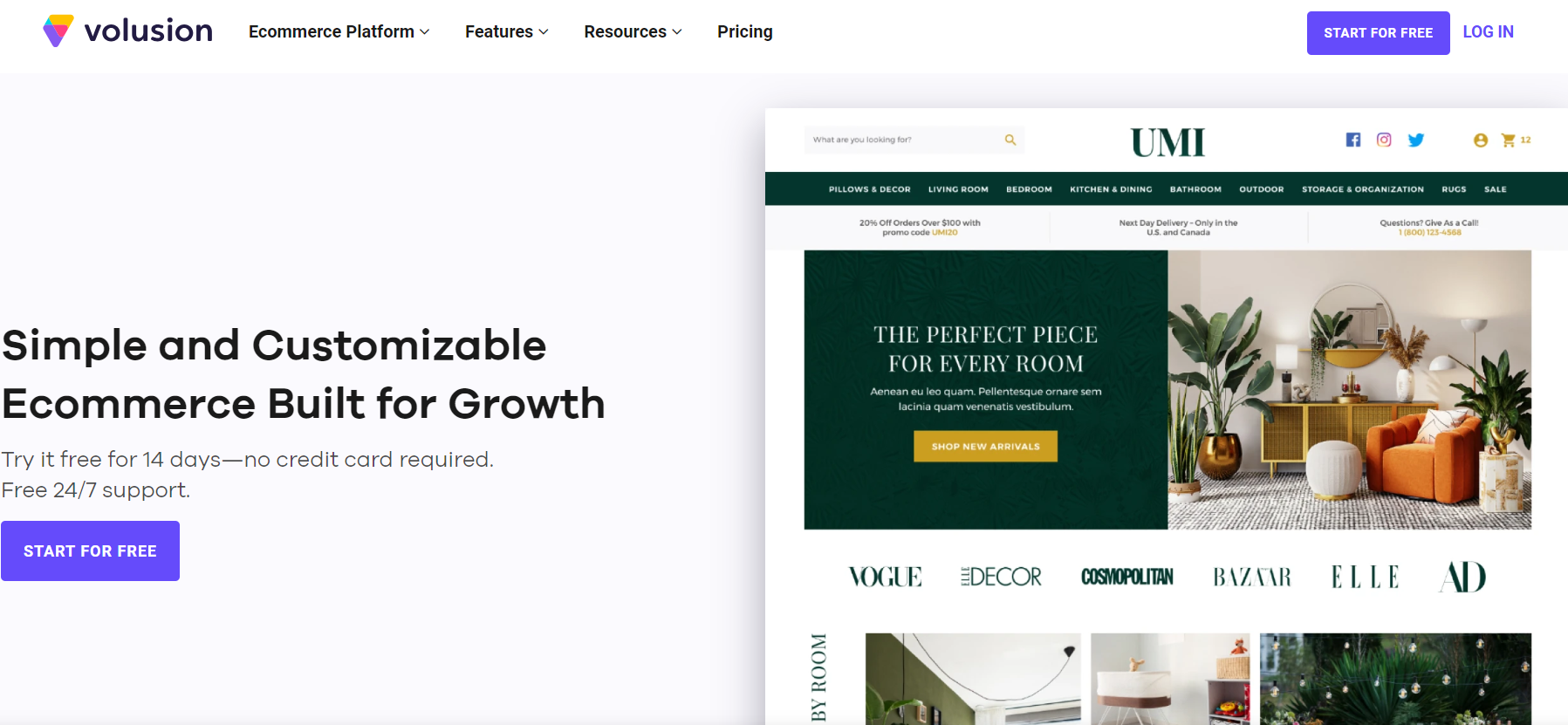
Founded in 1999, Volusion is also one of the oldest ecommerce platforms for dropshipping.
We would like to add that it has grown from a simple online shopping cart to a feature-rich ecommerce platform. It may not be quite at the same level as its recent competitors like Wix and Shopify. However, it still remains popular and stable.
Another thing we must point out is that the platform has dozens of themes and a drag-and-drop page editor. That’s why with Volusion, you can easily create a professional ecommerce website.
But it does not provide website hosting. Also, it does not allow you to sell products on social media or marketplaces such as Amazon and eBay.
There are three monthly subscription plans on Volusion:
– Personal Plan: US$29;
– Professional Plan: US$79;
– Business Plan: US$299.
Like many of the best ecommerce platforms listed Volusion offers free trial to explore the product.
Top Ecommerce Platforms for Dropshipping
The platform should include some basic features such as web hosting, payment processing, and shopping cart tools.
In other words, you need one of the top ecommerce platforms for dropshipping to have control over every aspect of your business.
With one of the best ecommerce platforms listed below, you can transform your website into a professional dropshipping store.
However, not all dropshipping platforms are the same.
Therefore, we will make an in-depth comparison of the best ecommerce platforms and help you choose the one that is the best fit for your business goals.
What To Look For When Choosing the Right Ecommerce Platform
Picking the best ecommerce platform in 2024 for your dropshipping business is like standing in front of the frosted glass doors at the grocery store and trying to choose the best ice cream flavor.
But no worries – we can help you out with this! When making the final decision, take into account the following factors:
Ease of use
How many times have you been confused and annoyed since your laptop did something unexpected and you had no idea how to fix it?
Although you do not have to be a web developer to navigate the best ecommerce platforms, having some basic technical background can be really useful.
But if you are a non-tech person, do not feel disappointed as you are not the only one. Just make sure you pick a platform that is easy to use and beginner-friendly.
Pricing
The second thing you must consider when making the decision is the price. Whether you are a new dropshipping business just getting started or an already established one looking for other dropshipping platforms, you must choose the one that fits your budget.
Payment processing
What is the third thing you need to consider when choosing the right ecommerce platform in 2024?
A consumer is more likely to complete their purchase as long as multiple payment options are available on a dropshipping platform.
So, it is recommended to select a platform with multiple payment options. Also, consider the currencies you operate with and the payment methods your customers prefer.
SEO
Your dropshipping store needs to come up in search results for your products and brand name.
That’s why you should opt for an SEO-friendly ecommerce platform in 2024. For instance, look at whether you can use your own domain name or add a blog to your website.
Mobile-friendly
With mobile devices accounting for half of the web traffic worldwide, it goes without saying that your site should be mobile-friendly. Thus, choose a platform with mobile responsive themes and templates.
Integrations and apps
You will have to automate your dropshipping store as your business grows. This means that you will have to minimize human involvement and use different apps and integrations.
Ever heard of the Spocket Dropshipping app? Learn more about how they can help you grow your store with EU & US-based suppliers.
So, the versatile range of integrations and apps is also a significant factor you must consider when choosing from the best ecommerce platforms.
Scallability & Automations
As a dropshipping beginner, you may not need ecommerce platforms for dropshipping with high-traffic capabilities and additional support.
However, when selecting a platform, ensure it has the capacity to handle a large amount of traffic.
Plus, make sure it allows you to customize and automate your store based on your needs.
Technical Support
You may need technical support while using one of the ecommerce platforms for dropshipping.
So, it is a good idea to choose a platform that offers multiple support options like phone, live chat, and e-mail.
The bottom line
There you have it – our list of the best ecommerce platforms for dropshipping.
Check our ultimate comparison of the two biggest ecommerce platforms: Ecwed vs Shopify.
Just remember: The right ecommerce platform in 2024 should make the process of selling online simple and easy.
READ BEFORE YOU GO: Wish Dropshipping: Everything You Need To Know As A Beginner
HOT TOPIC: How To Start Walmart Dropshipping – Beginner’s Guide
COMPARE: The comprehensive HyperSKU Review
DON’T MISS: The ultimate ecommerce product strategy
So, when choosing the right ecommerce platform in 2024, ensure it suits your tech skills and has all the components you need to run and grow your dropshipping business.
In short, it should ease your day-to-day operations and allow for scalable, long-term growth.













![The Top 21 3PL Companies Compared [2024 List & Guide]](https://images.weserv.nl/?url=https://prod-dropshipping-s3.s3.fr-par.scw.cloud/2024/03/Frame-3922469.jpg&w=420&q=90&output=webp)